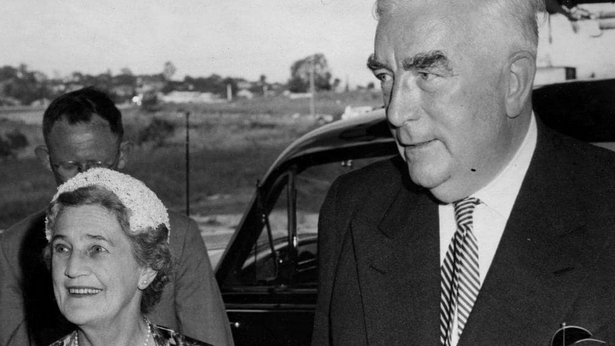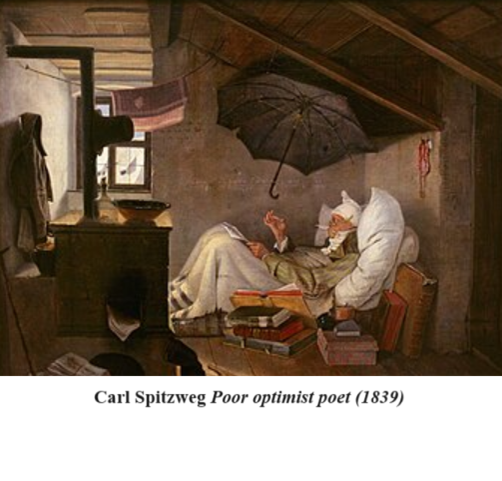
Myeloma and All That
The Cancer Finishing School
by Peter Goldsworthy
Viking, 2024, 336 pages, $36.99
This poet-reviewer tends to regard the poetry as the centre of all the above and is thus gratified to see the present book start and finish with a deservedly well-known poem by Goldsworthy—and to note that each of its sections begins with one of his haiku.
Readers unfamiliar with Goldsworthy’s work may possibly have false expectations of this book, to think of it as a serious, comprehensive medical guide, from an insider’s point of view, on how to “survive” cancer—multiple myeloma, in particular. Though The Cancer Finishing School is essentially “serious”, it is also unfailingly witty and highly anecdotal.
Goldsworthy takes full advantage of the opportunity (with the relevant permissions, where available) to regale us with doctor stories he must have been storing away for years. They are variously inspiring, comic, unbearably poignant by turns and often sparked off by a comparison with his own situation, the doctor-as-patient—not a role they’re normally good at.
These diversions do, of course, have the effect of drawing the reader away from the inherent emotions in the author’s own narrative, but this is as Goldsworthy wants it. His writing is never less than entertaining, in the best sense, yet informative at the same time. Most of us will certainly know a great deal more about myeloma, and its current treatments, after reading this book than we ever did beforehand.
We’ll also discover what lies behind the jaunty, self-confident facade that most doctors, male or female, affect. The reciprocal loyalty between “Doctor Pete” and his patients emerges convincingly from this book without any attempt to exaggerate it. The older patients are upset that Goldsworthy may not be able to “see them out”, as they put it. There is a two-way vulnerability here which readers may find both surprising and affecting.
The book is in ten parts with numerous subsections. It’s a relaxed but intense journey. It’s not until the beginning of Part II that we encounter the author’s accidental diagnosis following an MRI for a recurrent knee problem. When the scan is ready, the author’s radiologist friend suggests: “there might be another problem”. “The bone marrow,” he goes on. “Looks a bit odd. Might be a multiple myeloma.” It’s the beginning of a five-year story—indeed, more than that since, at the time of publication, the author is still under maintenance treatment with the provisional status of full remission.
As we’d expect from a writer of Goldsworthy’s complexity, his reactions are various—from denial to almost embracing the disease: “What priceless material for a doctor-writer!” The reactions become even more varied as the treatment proceeds over the months and years.
Quite early in this process is the inescapable autologous stem cell transplant. Goldsworthy’s description of it is a good example of his almost ludic style. It’s not the sort of thing readers might expect in a “cancer manual”:
If I were pitching the storyline to a film producer, a two-sentence treatment might sound like this: a suburban doctor, an innocent, if complacent foot-soldier in the war against cancer, is deliberately given a fatal dose of poison—by another doctor. The poison is melphalan, in essence, mustard gas, the same chemical used on my late patient Eric in the trenches of Flanders a hundred years earlier, but now available in a handy new liquid intravenous form. A few days later, with only hours to live, the clock ticking, the victim is injected, just in time, with its antidote.
The self-deprecation in “an innocent, if complacent foot-soldier” is typical, as is the irony in the “handy” new use of mustard gas and the self-conscious melodrama in “clock ticking” and “just in time”, and so on. It’s not only funny, but brave in a laconic, self-ironising way. Whether this is something “Doctor Pete” already had in his armoury or is something he’s acquired under pressure is not clear. Either way, it’s impressive.
Impressive too is a vivid description of his sustained and violent diarrhoea later in the treatment. It’s hard to imagine your own GP allowing him- or herself to appear so vulnerable:
The diarrhoea continues for another ten days; I lose 10 kilos. Each day is much like the first: numerous changes of pull-ons, and never quite able to make it to the ensuite, especially when the herald cramps awake me at night. The nursing attention is embarrassingly superb, and there is a shower if I get that far, but ten times a day? Perhaps it’s twenty, still rounding to the nearest decimal.
This too is an important feature of the book, the author’s gratitude to the people who look after him throughout. Allied to this is also the author’s awareness of his privilege and good luck in having one of the world’s better health systems to help him through. As Goldsworthy makes clear, it wasn’t—and isn’t—always like this.
If these excerpts sound self-absorbed, it’s worth pointing out that much of the book is actually concerned with other people: his wife, Lisa, his literary and theatrical friends and, of course, his patients of forty years whom he tends to regard as a kind of extended family. Most of the anecdotes about the last group are highly memorable and, often, poignant. Some are humorous, such as the elderly lady convinced that her ankles are swollen because of an act of intercourse which she immediately regrets. Some are both humorous and poignant, such as the case of the unfortunate woman who has two successive husbands die on her during sex, and a few are just plain heart-rending.
One of this group reminds the reader, annoyingly, of one of the book’s few defects. It doesn’t have either a table of contents or an index. There’s a very touching story in it (somewhere) about a widower who’s still suffering from acute loneliness after the death of his wife some years earlier. The author and his wife invite him to join them at Christmas dinner but he politely declines, saying he always takes a honey sandwich down to the local jetty at that time and eats it, thinking of his wife. There are numerous other stories of the same kind throughout where the author shows that he’s at least as interested in other people’s problems as he is in his own (which are surely considerable enough).
The last section, “Lessons Learnt”, is densely packed with good advice deriving from his cancer experience. Goldsworthy clearly feels that what has happened to him—though frightening, painful, embarrassing and often hard on others close to him—has changed him for the better as a person and probably as a writer and a doctor too (though it’s not clear how far, and in what form, the latter work will continue).
A single paragraph towards the end of the final chapter gives a good sense of the book as a whole—and one of its main “lessons”:
“Death is the mother of beauty”, Wallace Stevens wrote in one of his finest poems, “Sunday Morning”. A big claim, even for a poet. The golden morning outside my window is as full of beauty—and birds—as his poem, but when it comes to the begetting of beauty Death is less the mother than the midwife, surely; a catalyst, a goad, a prompt. It offers both the carrot and the stick if, as I read Stevens, Death stands for the awareness of death, however subliminal, and beauty stands for the loveliness of life.
While The Cancer Finishing School may be unlike many of Goldsworthy’s earlier books, it is also a kind of culmination in that it provides a compelling portrait of the person who created them, both as he was and as he has become.
Geoff Page’s latest books of poetry are 101 Poems: 2011–2021 and a collection of new poems, Penultima, both published by Pitt Street Poetry
A new collection of essays corrects the pessimistic view of race relations
Sep 29 2024
11 mins
I enjoyed the Voice losers’ silence. Their embarrassment was even more delicious
Sep 29 2024
13 mins
Three books remind us the poet's purpose is not to lecture, but to make us think about life
Sep 29 2024
9 mins







